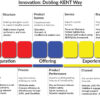
The above-mentioned article, recently featured in The Economic Times, takes one through an organized and motivational method of long-term wealth creation specifically designed to appeal to young Indians. The points brought up by Nitin Kaushik, a chartered accountant, all relate to his fundamentals of financial math and make it clear that one crucial concept must be remembered by all those seeking wealth and success, and that is that anyone under 40 years old can be wealthy if they manage to stick to three disciplined habits.
Kaushik argues that wealth creation is not something that happens by chance or is the reserve of high-earning professionals. Instead, wealth generation is what goes as the predictable outcome of sound saving and investments, and sound patience. Though quite straightforward, Kaushik’s concept has high potency if viewed in the context of India’s high growth economy and international demand for long-term equity investments.
The Wealthy Emerging Fifties
As reported by The Economic Times, “India is set to embark on a growth spurt, with all indications pointing to its emergence as one of fastest growing engines of wealth creation globally.” Kaushik argues that “this is exactly when younger workers need to make long-term financial choices that are in sync with India’s 10-20 year growth cycle.”
His statement, “This isn’t fantasy or luck. It’s mathematics working quietly behind the scenes,” may well be remembered as one of those revealing quotes for a generation of Indians concerned with wealth-building in their context.
Habit 1: Aggressive Saving — Foundational Principle
Kaushik recommends allocating at least 50 percent of each month’s income towards saving. This means that if one earns ₹1,00,000 in a month, he or she must allocate at least ₹50,000 each month.
This hypothesis has support in mainstream wealth psychology theories. Dave Ramsey, an American personal finance expert, writes, “A budget is telling your money where to go instead of wondering where it went.” Though Indians as an investment community have shown exemplary saving discipline, their choice of investments has tended towards those with minimal returns, such as fixed deposits and gold. Kaushik’s approach to saving upgrades the practice by associating it with high potential investments.
Contextual Example (Indian context):
A software engineer from Bengaluru, aged 28, saving ₹50,000 each month, forms an endowment fund focusing on crisis-resilient efforts and, at the same time, providing support to aggressive investments.
Contextual Example (Global context):
The Japanese household sector, well-known for its high savings ratio, has clearly passed tests of sustained market stagnation, with its culture of thrift playing its part in creating long-term buffers.
Habit 2: Investing Wisely — The Growth Engine
The article emphasises that saving alone is insufficient. Kaushik recommends investing 70% of savings in equities, preferably through SIPs, index funds, or high-quality stocks.
His strategy mirrors the legendary investing principle of Warren Buffett: “Do not save what is left after spending; instead spend what is left after saving.”
Why equities?
- They benefit directly from India’s long-term GDP growth.
- They compound across decades.
- They outperform traditional asset classes like gold or real estate over long horizons.
- SIPs and index funds reduce risk by distributing investments and avoiding market timing.
Example (Indian perspective):
Nifty 50 TRI has delivered ~12–14% returns over long periods, despite volatility. A 20-year SIP historically transforms disciplined investors into wealth creators.
Example (International perspective):
The S&P 500, despite multiple recessions, has averaged 10–11% over 50 years. Long-term equity investing has created millionaires in the US, Europe, and Australia—supporting Kaushik’s argument.
Habit 3: Consistency Across Decades — The Silent Multiplier
Kaushik stresses that true wealth is created over decades, not years. A 20-year horizon converts a ₹1 lakh monthly SIP into more than ₹10 crores, assuming a 12% annualised return.
The magic formula?
Compounding × Time × Discipline
This echoes Albert Einstein’s famous line: “Compound interest is the eighth wonder of the world.”
The article rightly emphasises avoiding short-term distractions like daily trading or attempting to time the market. Consistency—not cleverness—is the invisible engine of wealth creation.
Pros of Kaushik’s Framework
✔ Scientifically grounded
No speculation. No shortcuts. Just mathematics + discipline.
✔ Suitable for Indian demographics
India has a young workforce, rising incomes, and long working lives—ideal for compounding.
✔ Simple and actionable
Three habits are easier to follow than complex financial plans.
✔ Works across market cycles
Staying invested over decades eliminates volatility concerns.
✔ Builds financial resilience
High savings + long-term investments reduce financial stress and create opportunity reserves.
Cons and Realistic Limitations
✘ High savings target may be difficult
Saving 50% is challenging for individuals with loans, family dependence, or living in expensive metros.
✘ Requires emotional discipline
Not everyone can ignore market noise, crashes, or fear-driven selling.
✘ Equity exposure can be risky without guidance
New investors may misallocate funds or chase high-volatility stocks without proper knowledge.
✘ Inflation and lifestyle creep
As incomes rise, lifestyle expansion can overshadow disciplined saving unless consciously controlled.
Examples of Wealth Built “Mathematically”
Indian Example:
A 30-year-old investing ₹75,000 monthly in SIPs from 2010 to 2024 would have accumulated ₹4–5 crores already, purely through compounding and discipline.
International Example:
American “401(k) millionaires”—employees who passively invested in index funds for 20–30 years—demonstrate how average incomes can produce extraordinary wealth.
Last words: India’s New Middle-Class Wealth Blueprint
The Economic Times article featuring CA Nitin Kaushik is both insightful and empowering.
The article dispels myths regarding wealth generation with a familiar mathematical certainty, rendering it accessible to young Indians, as if it were their birthright. The need to credit the publication and its author is inherently emblematic of journalistic prowess in spreading financial acumen.
The three practices—save heavily, invest sensibly, and be patient—also form an eternal trinity. For those under 40, these tenets not only serve as advice, but they also form a structure that helps in achieving financial independence.
But if these tenets are applied sincerely, they shall bear the potency to turn young earning rubes into the next generation of self-made crorepaties in India.
Dr. Prahlada N.B
MBBS (JJMMC), MS (PGIMER, Chandigarh).
MBA in Healthcare & Hospital Management (BITS, Pilani),
Postgraduate Certificate in Technology Leadership and Innovation (MIT, USA)
Executive Programme in Strategic Management (IIM, Lucknow)
Senior Management Programme in Healthcare Management (IIM, Kozhikode)
Advanced Certificate in AI for Digital Health and Imaging Program (IISc, Bengaluru).
Senior Professor and former Head,
Department of ENT-Head & Neck Surgery, Skull Base Surgery, Cochlear Implant Surgery.
Basaveshwara Medical College & Hospital, Chitradurga, Karnataka, India.
My Vision: I don’t want to be a genius. I want to be a person with a bundle of experience.
My Mission: Help others achieve their life’s objectives in my presence or absence!
My Values: Creating value for others.
Leave a reply
















Dear Dr. Prahlada N.B Sir,
Heartfelt congratulations on sharing the timeless wisdom of "The Mathematics of Wealth"! Your article brilliantly distills the essence of Nitin Kaushik's three simple habits – aggressive saving, wise investing, and consistency – that can transform ₹1 lakh a month into ₹10 crores.
Your emphasis on empowering young Indians to achieve financial independence through disciplined saving and investing is truly commendable. The principles you've outlined are a beacon of hope for those seeking financial security and prosperity.
Please accept my sincerest appreciation for sharing this invaluable knowledge. Your contribution to spreading financial literacy is truly laudable.
Reply